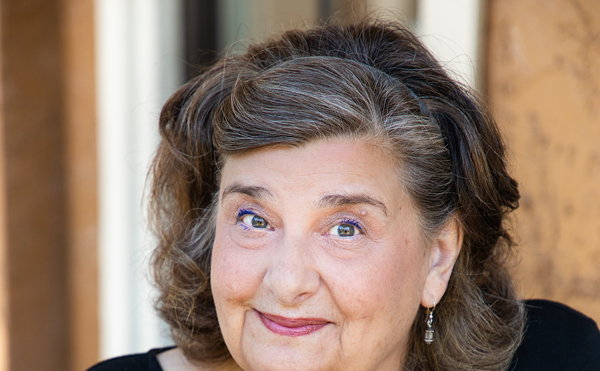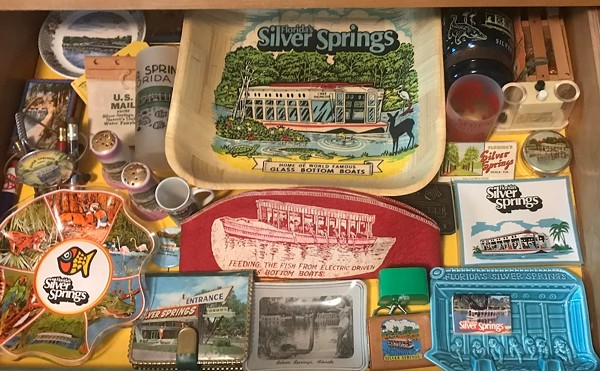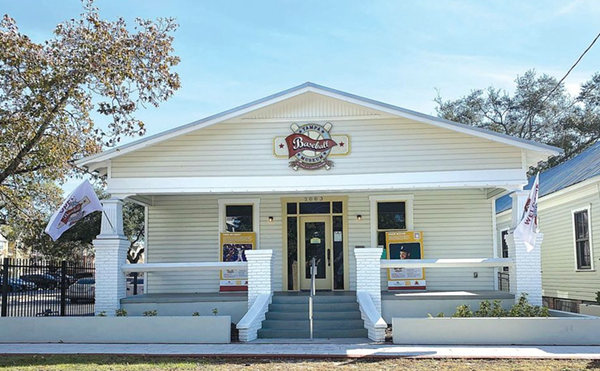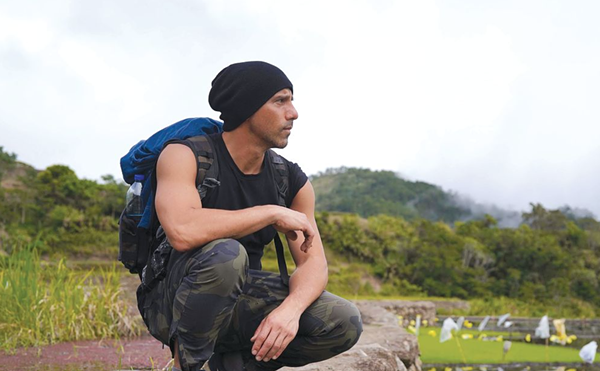
Florida Prize in Contemporary Art
Runs through Sept. 6 at the Orlando Museum of Art, 2416 N Mills Ave, Orlando, 407-896-4231. omart.org.
Who is Florida’s most promising contemporary artist? The Orlando Museum of Art’s second annual Florida Prize in Contemporary Art doesn’t put the question so bluntly, but it suggests such a comparison by selecting 10 artists who live in the state to participate in a juried exhibition and compete for a $10,000 award. The winner will be announced next week, and the upshot is an excellent exhibition that continues into September.
Two Tampa-based artists make strong showings. Michael Covello’s abstract paintings are enticing studies of color, rhythm and layering. A selection of them hangs obediently next to one of his exuberant installations, in which painting explodes off the wall into fragments, ribbons and pools of material. An architectural installation by Cesar Cornejo stands in for his community-based process of transforming working class homes into temporary art museums in Puno, Peru, and Havana, Cuba. The installation offers visitors a spread of photographs of the remote projects and a small-scale experience of Cornejo’s real-world interventions. (Full disclosure: Covello is a colleague at the University of South Florida’s Institute for Research in Art and Cornejo teaches in USF’s School of Art and Art History.)
They’re up against talents that would be tough to beat, including Orlando’s own Wanda Raimundi-Ortiz, who works across performance, video, photography and sculpture to skewer ethnic and gender stereotypes and art world inequities. Ortiz cuts a compelling presence as Chuleta Yoprimero, a stereotypically sassy Latina who dispenses no-bullshit analyses of contemporary art’s sacred cows on low-budget home video. (Ortiz has played the character, whose first name means “pork chop,” since 2006.) Chuleta’s commentary on art biennials offers the closest thing to a reflexive moment in the exhibition — a pause when visitors might contemplate the Florida Prize as one episode in the high-minded hustle of being an artist.
A more recent series finds Ortiz embodying, in vivid color photographs, a series of unconventional queens swathed in packing materials like bubble wrap; the images are brilliant but the costumes don’t stand well on their own as sculptures.
Nicholas Lobo’s sculptures fascinate with their elaborate backstory. While they resemble Chinese scholars’ rocks in form, their shape is the outcome of Lobo’s experiments in making napalm, the notorious burn agent that adheres to skin, rather than a curious force of nature and time. Lobo pours gasoline onto Styrofoam and stops the process before it can liquefy completely into a substance close to napalm; then he coats the cratered remains with a rind of gray or blue play-dough. (In another strange twist, the blue play-dough is tinted with a Swedish energy drink once marketed as an aphrodisiac that Lobo discovered cases of in a Miami warehouse.) Formally contemplative and intellectually grotesque, they look fantastic arranged a gallery with a vertigo-inducing green-and-gray spiral mural by fellow Miamian Bhakti Baxter.
My pick for most likely prizewinner, though, is Antonia Wright. The Miami-based artist’s performances on video evoke an increasingly celebrated lineage of female artists who have used their bodies to make uncomfortable art. Wright’s “Suddenly We Jumped” (2014) has the makings of a seminal museum piece. In it she floats up nude out of a black background, a vision both romantic and incongruously explicit, until her body comes into abrupt contact with a pane of glass, which shatters instantly into large shards. As a viewer you’re momentarily stunned, then unsettled and left mulling over associations — a proverbial glass ceiling, the prevalence of violence against women — that only multiply and become more troubling. Another video, “Be,” shows Wright performing tai chi as a swarm of bees clings to her body. While the latter borders on too clever, there’s something haunting across a variety dimensions, from the visual to the psychosocial, about Wright’s sustained nonchalance in the face of banal danger.
Odds are that I’m wrong, but it’s that kind of depth a prize like this one was created to reward.
The other artists in the 2015 Florida Prize in Contemporary Art are Farley Aguilar (Miami), Rob Duarte (Tallahassee), Jennifer Kaczmarek (Pensacola) and and Alex Trimino (Miami).


















